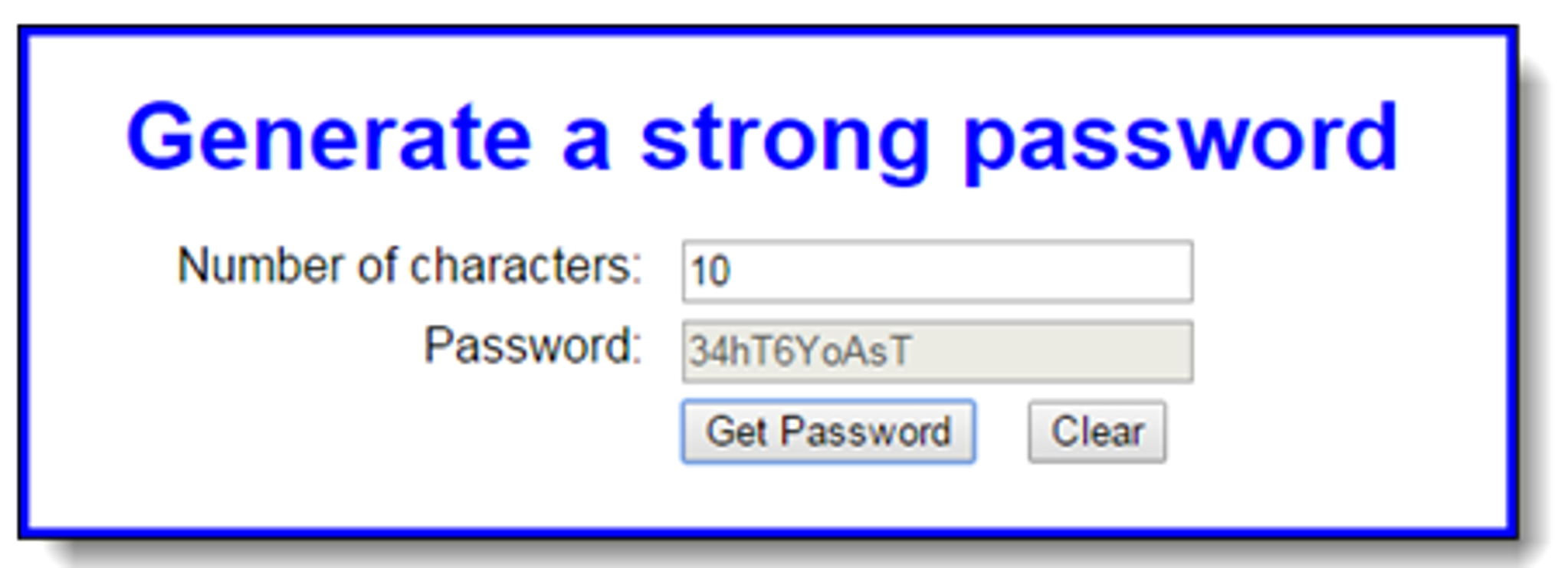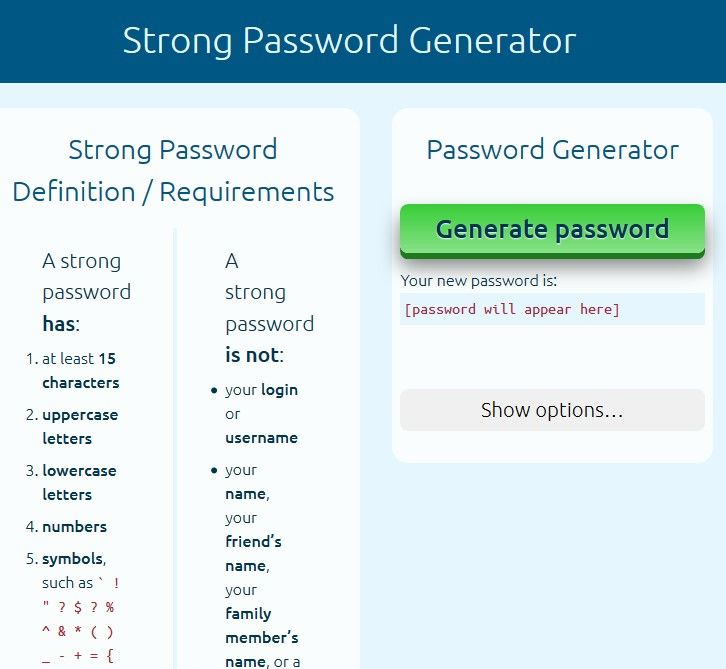

STRONG PASSWORD GEN UPDATE
Update passwords after every three months.Avoid using similar passwords that change only a single word or character.


Share your sensitive information with friends and family through LastPass’ secure password sharing. Never share your passwords via email or text message.When you create a password on your own, use random characters, but don't follow easy-to-recognize patterns – e.g.Avoid password reuse with the security dashboard, which alerts you to take proactive action when you’ve reused a password or created a weak one.
STRONG PASSWORD GEN GENERATOR
A password manager like Dashlane, with a built in password generator, is the only safe way to create secure passwords for all of your accounts, store them, and have them typed for you online. This Password Generator creates strong random passwords that are highly secure and very difficult to crack or guess due to the combination of lower and. Don’t use any personally identifiable information in your passwords. To generate a strong password, select your options and click the generate button. Our password generator makes it easy The average person has over 90 online accounts.Make sure your passwords are at least 12 characters long and contain letters, numbers, and special characters. getpass is a script for producing a randomized password given common criteria as seen in all types of computer systems and software. Instantly generate a secure, random password with the LastPass online tool Make that password easy to remember with LastPass Your passwords, from any device.LastPass will generate a unique password for each account you create. With the LastPass built-in password generator you don’t need to fuss with thinking of new passwords.The randomness comes from atmospheric noise, which for many purposes is better. Take action and improve your defense against them. This form allows you to generate random passwords. Experts advise to never share your passwords, but if you absolutely must, we highly recommend sharing your passwords securely with the help of a password manager.Phishing, stolen credentials, and human error challenge your password security. Sharing your passwords insecurely through email, text message, Microsoft Teams, WhatsApp, Slack, Discord, etc., leaves you at a higher risk of having your accounts compromised. This attack works on the assumption that people often use the same username and password across multiple sites.ĭon't share passwords in unencrypted formats A credential stuffing attack is when a cybercriminal takes leaked credentials from one site and uses them on multiple sites in an attempt to gain access to your accounts. Reusing the same passwords puts you at risk of a cyberattack, such as credential stuffing. At least one special character, such as ! # ?.At least 12 characters, and preferably more.Strong passwords should be long, complex and difficult to remember.

Your first line of defense against cybercriminals breaking into your online accounts and stealing your personal data is to use strong, one-of-a-kind passwords. Password Best Practices to Follow Don't use personal information in your passwordsĮasy passwords, such as password123 or your dog’s name, are simple to remember but also simple for cybercriminals to crack. Strengthen your organization with zero-trust security and policiesĪchieve industry compliance and audit reporting including SOX and FedRAMPĪutomate credential rotation to drastically reduce the risk of credential-based attacks Restrict secure access to authorized users with RBAC and policies Initiate secure remote access with RDP, SSH and other common protocols Manage and protect SSH keys and digital certificates across your tech stack


 0 kommentar(er)
0 kommentar(er)
